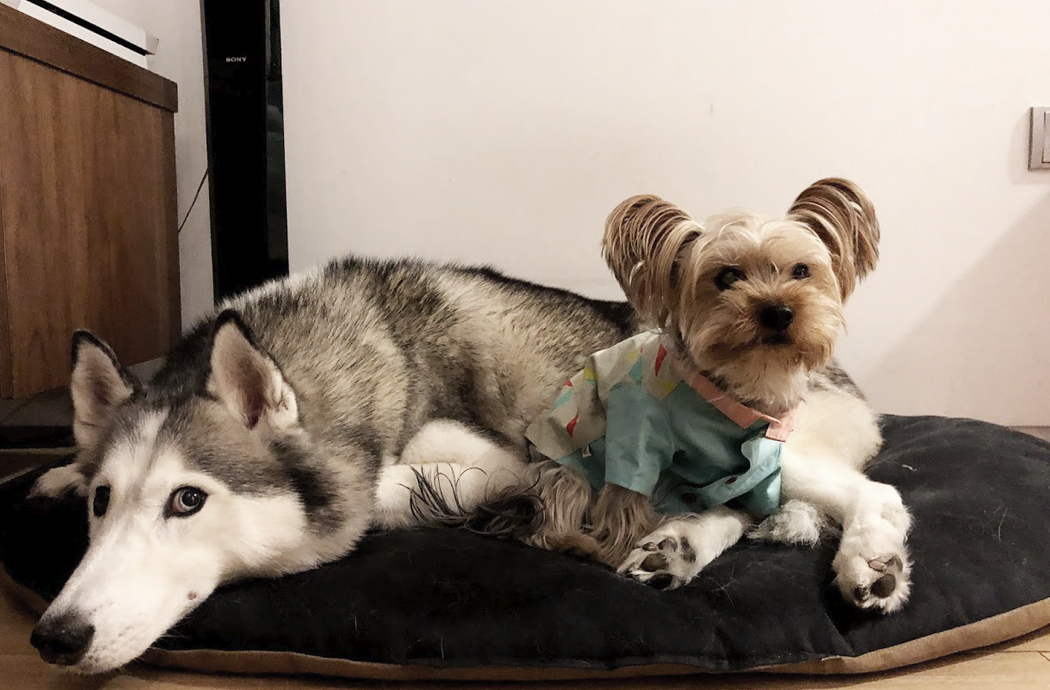Here’s how to get your pet into Singapore
Pets have been considered part of the family for a long time. And when we make an overseas trip, our furry family is the last thing we’d want to leave behind. This guide is written mainly for our feline and canine companions but can be used as a general guide for other pets as well.
The easiest way to get your pet to Singapore is to pay a relocation company to do it for you. But if you want to do it yourself, here’s how:
The AVA (Agri-Food and Veterinary Association of Singapore) has rather strict laws on bringing a pet into Singapore, so take notes on what is allowed and what isn’t.
Pre-travel Prep.

Microchip.
Your pet (cat or dog) will have to be microchipped with an ISO-compliant microchip that is non-encrypted before it comes into Singapore.
Accommodation.
Check the breed of your cat or dog and if it is eligible to be brought into Singapore and your place of residence.
This is a table of cats and dogs NOT allowed in Singapore:
| Breeds of dogs not allowed in Singapore | Breeds of cats not allowed in Singapore |
|
|
*Before you import, you are required to produce documentary proof that your:
- Bengal cat cross is at least a 5th generation cross from the ancestral stock of Prionailurus bengalensis
- Savannah cat cross is at least a 5th generation cross from the ancestral stock of Leptailurus serval
Table adapted from Agri-Food and Veterinary Association of Singapore
Only these small breeds of dogs are allowed in HDB (Housing Development Board) flats. All cats are not be allowed into HDB flats. These bigger breeds of dogs and cats are allowed in non-HDB residences. When it comes to rental properties, certain developments have stringent rules or even a no pet policy.
However, you can find pet-friendly serviced apartments in Singapore.

Rabies Risk Category.
| Category A Countries free from rabies | Category B Countries with negligible risk of rabies | Category C Countries with controlled risk or low incidence of rabies | Category D Countries with undetermined risk of rabies |
|
|
| All countries not listed in Categories A, B and C |
Table adapted from Agri-Food and Veterinary Association of Singapore
Check the rabies risk category of your country using the table above. Depending on which it falls under, your pet might have to undergo a certain period of quarantine. For animals that fall under categories C & D, quarantine is required at Sembawang Animal Quarantine Station (SAQS). You’ll have to book a space at the AVA 3 months before the anticipated arrival date.
Vaccinations & Others.
Depending on the categories above, there are vaccinations, blood tests and others that your pet has to go through before coming into Singapore.
Licenses, Permits & Veterinary Health Certificate.
For dogs, you’d need to obtain a dog license before getting an AVA Import license. The form found in the category links also has to be completed by your private vet, and in turn, have the completed Veterinary Health Certificate endorsed by the official government veterinarian of your dog’s or cat’s country of export.
The AVA has a handy pet import requirement calculator you can use. And check here for requirements and procedures for Singapore customs.
Travel Prep.

Inform Singapore’s border control of your pet’s arrival date and time at least 5 days before it arrives via iFAST (Intelligent Food Approval & Safety Tracking System).
Airline Type.
So you’re all set to travel – complete with vaccinations and quarantine space. Check with different airlines, as some airlines allow pets to be checked in as carry-on luggage to be placed under the seat of the aircraft. Most allow them to be airflown as cargo.
Carrier.
You’ll need a carrier as well, if your pet is in the aircraft with you, a soft carrier bag might suffice for some airlines. But if it is in the cargo you’ll need a proper hard case pet carrier. And start getting your little one used to being in an enclosed space for a long period – put them in the crate or kennel for awhile every day. A light meal and some water is recommended before flight.
Protip – don’t sedate or tranquilise your pet for the flight. Often times the sedation leads to adverse effects from the medication or the inability to sustain balance during flight.
Landing.
After you’ve got here safely, your pet will undergo a veterinary inspection at the border checkpoints – at Changi Animal & Plant Quarantine Station (air travel) or Tuas Checkpoint. If your animal requires quarantine, it will be sent to Sembawang Animal Quarantine Station.




